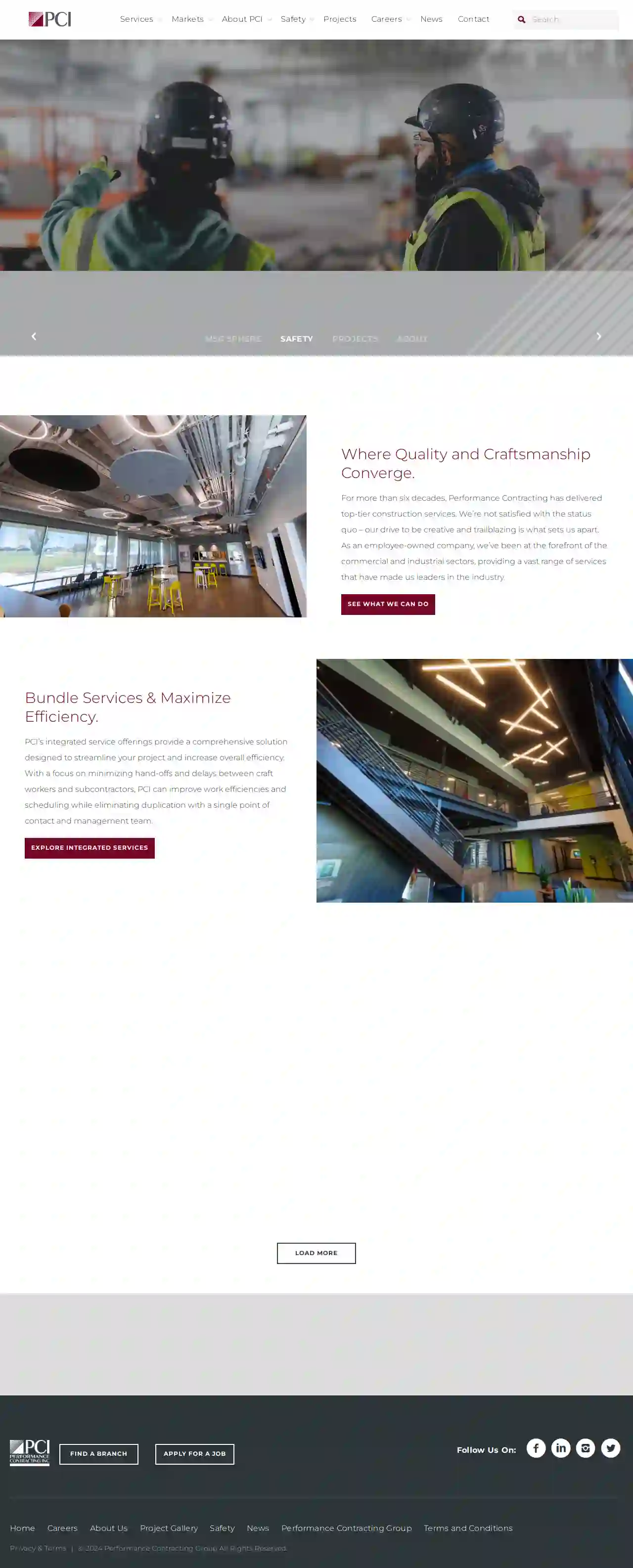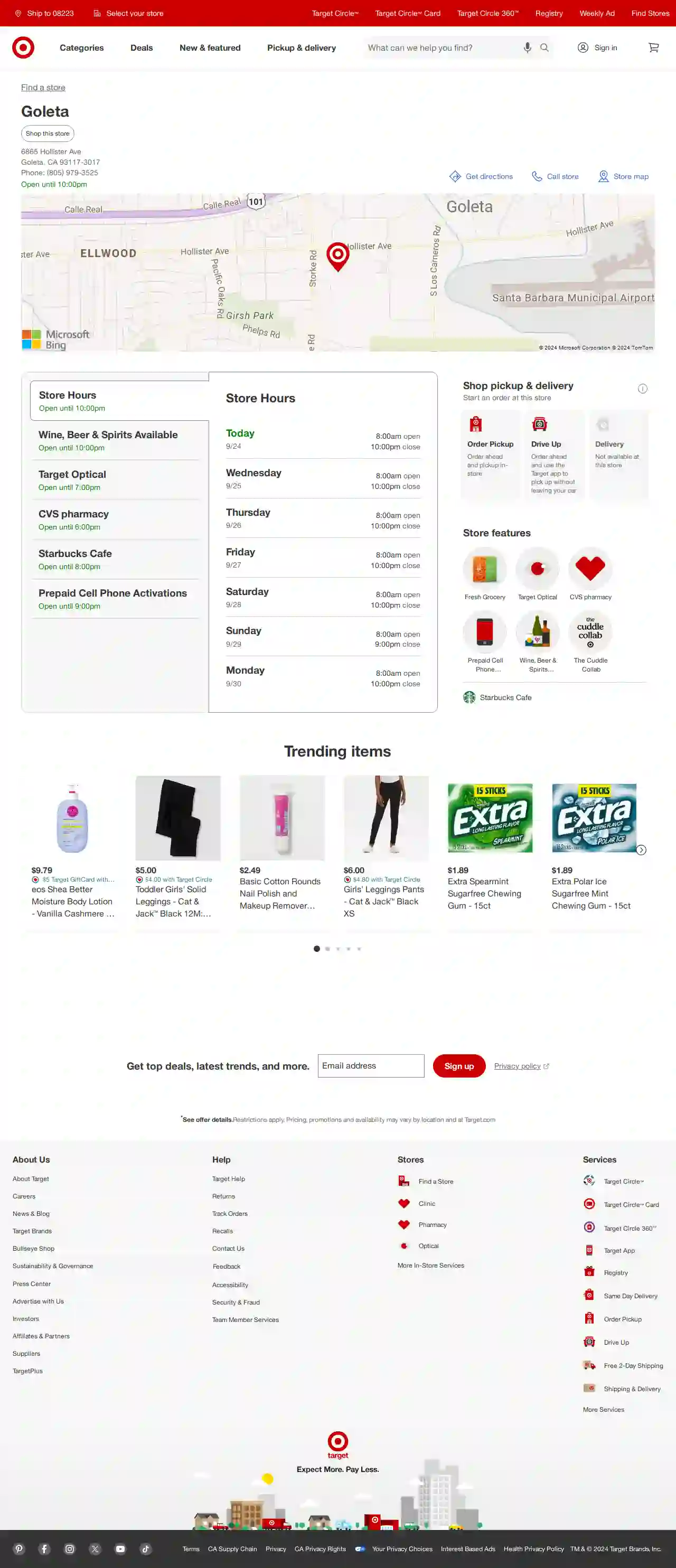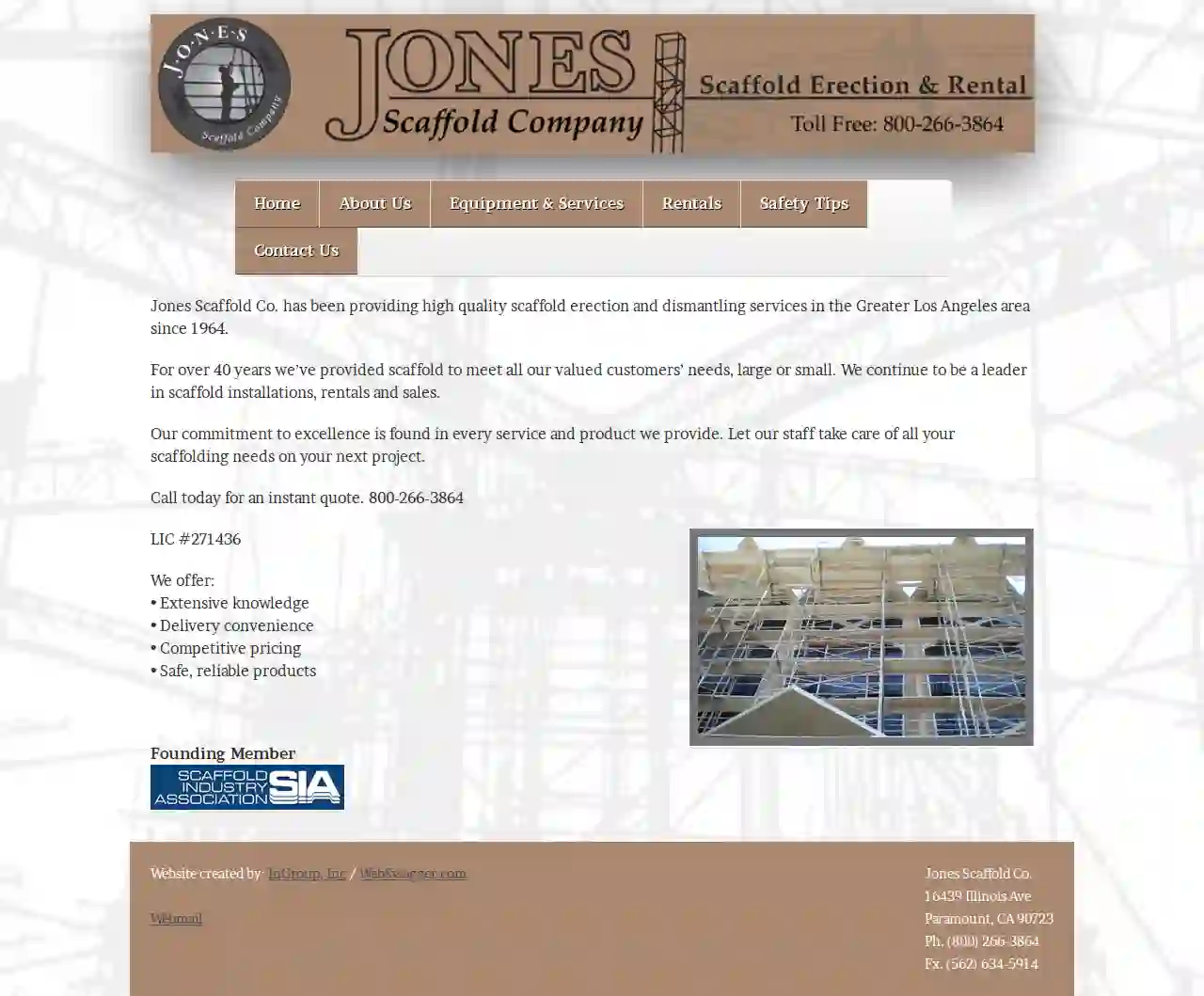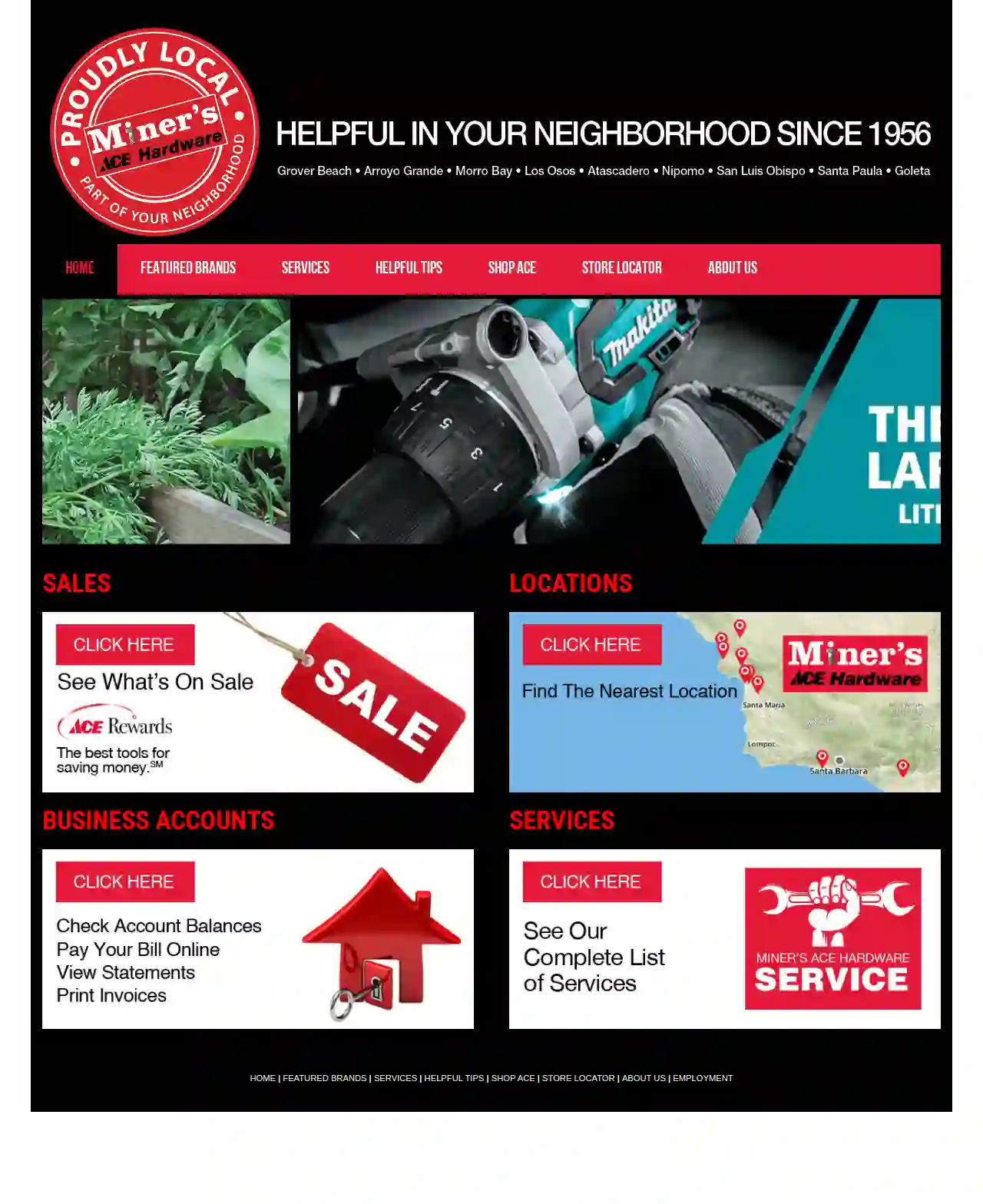Scaffolding Companies Pittsburg
Find the best Scaffolding Specialists in Pittsburg
Get multiple Scaffolding Erectors quotes for your project today! Compare profiles, reviews, accreditations, portfolio, etc... and choose the best deal.

Designs plastering inc
41 reviewsOxnard, USDesigns Plastering, Inc. Agustin Espinoza, the owner of Designs Plastering, Inc., provides reliable, cost-effective, high-quality plastering and lathing services. Designs Plastering, Inc. serves the general public, working on both residential and commercial projects. The company is known for its courteous, professional, and punctual service. They are adept at handling smaller domestic jobs with the same expertise as larger contracts. Their reputation is built on quality. Based in Oxnard, CA, Designs Plastering, Inc. covers Santa Barbara, Ventura, and parts of Los Angeles counties and surrounding cities. For a free, no-obligation estimate or quotation, you can contact us HERE . Alternatively, call the office at: (805) 469-8395 for a quick response. Mission Statement At Designs Plastering, Inc., our mission is to deliver the highest quality finishing work for your exterior or plastering project. We utilize the latest tools and techniques available and employ only qualified personnel. Our work, as well as our workers, are fully insured. Our presence on your job site is professional, efficient, and easily coordinated with other trades.
- Services
- Why Us?
- Accreditations
- Our Team
- Gallery
Get Quote
Performance Contracting Inc
3.54 reviewsSuite 100, 123 Main St, Kansas City, 64111, USAs a top-tier specialty contractor in the United States, Performance Contracting, Inc. takes pride in providing a comprehensive range of solutions and services to our valued clients. Our expertise and commitment to excellence ensure that we consistently meet and exceed customer expectations, setting the standard in the construction industry. With over 60 years of industry experience, PCI expertly delivers innovative solutions tailored to the specific needs of diverse market sectors. Our vast expertise and dedication to addressing unique challenges ensure that every project benefits from our proven track record. As an employee-owned company, we’ve been at the forefront of the commercial and industrial sectors, providing a vast range of services that have made us leaders in the industry. Our drive to be creative and trailblazing is what sets us apart.
- Services
- Why Us?
- Accreditations
- Our Team
- Testimonials
- Gallery
Get Quote
Target
3.5135 reviews6865 Hollister Ave, Goleta, 93117-3017, USTarget is a general merchandise retailer that offers a wide range of products, including clothing, electronics, home goods, and more. They have a strong focus on providing excellent customer service and a convenient shopping experience. With a presence in many locations across the US, Target is a popular destination for both online and in-store shopping. Their commitment to quality, value, and convenience has made them a trusted brand for many consumers.
- Services
- Why Us?
- Accreditations
- Our Team
- Testimonials
- Gallery
Get Quote
D L Scaffolding Inc
54 reviewsSan Rafael, USAt DL Scaffolding Inc, we provide safe, high-quality, and timely scaffold services to our clients in the San Francisco Bay Area and beyond. With a strong focus on trust, integrity, dependability, efficiency, detail-orientedness, and timeliness, we strive to deliver exceptional results that meet our clients' specific project needs. Our team of experts offers a range of services, including scaffold design and planning, scaffold erection, scaffold dismantling, scaffold rental, deliver and pick-up, and project management. We take pride in our ability to provide end-to-end scaffold services that ensure on-time completion and adherence to safety standards.
- Services
- Why Us?
- Gallery
Get Quote
Jones Scaffold Co
3.25 reviews16439 Illinois Ave, Paramount, 90723, USJones Scaffold Co. has been providing high quality scaffold erection and dismantling services in the Greater Los Angeles area since 1964. For over 40 years we’ve provided scaffold to meet all our valued customers’ needs, large or small. We continue to be a leader in scaffold installations, rentals and sales. Our commitment to excellence is found in every service and product we provide. Let our staff take care of all your scaffolding needs on your next project. Call today for an instant quote. 800-266-3864 LIC #271436 We offer: Extensive knowledge Delivery convenience Competitive pricing Safe, reliable products Founding Member
- Services
- Why Us?
- Gallery
Get Quote
Miner's Ace Hardware
4.4344 reviewsSan Diego, USMiner's Ace Hardware: A Family Legacy of Service Miner's Ace Hardware is a family-owned business with a rich history dating back to 1956. Founded by brothers Lee and Glenn Miner, the company began as a small hardware store in Grover Beach, California. Driven by a commitment to hard work and customer satisfaction, the brothers built a thriving business, expanding their operations over the years to serve the Central Coast community. In 1972, Miner's joined Ace Hardware, a buying co-op that allowed them to leverage the buying power of thousands of independent dealers. This strategic alliance enabled Miner's to remain competitive and offer a wide range of products at competitive prices. Under the leadership of Mike Miner, Lee's son, the business experienced significant growth and expansion. New locations were opened in Arroyo Grande, Morro Bay, Los Osos, Atascadero, Nipomo, San Luis Obispo, Santa Paula, and Goleta, bringing the Miner's Ace Hardware experience to more communities. Today, Miner's Ace Hardware continues to be a family-owned business, guided by the same values of hard work, customer service, and community involvement that were instilled by its founders. The company is committed to providing its customers with a wide selection of products, expert advice, and friendly service.
- Services
- Why Us?
- Gallery
Get Quote
BrandSafway Services Benicia
4.25 reviewsVallejo, USBrandSafway is a leading provider of access solutions, including scaffolding, aerial work platforms, and forming and shoring. With a strong commitment to safety, quality, and customer satisfaction, BrandSafway delivers innovative solutions to meet the unique needs of clients across various industries. Their team of experts works closely with clients to understand their requirements and provide tailored solutions that enhance efficiency, productivity, and safety on site. BrandSafway's mission is to provide exceptional service, quality, and safety to their clients, ensuring successful project outcomes.
- Services
- Why Us?
Get Quote
Contractors Scaffold Supply
4.84 reviews229 Harbor Way, South San Francisco, 94080-6811, USWelcome to Contractor's Scaffold Supply, Inc. Contractors Scaffold is a family owned company serving the greater San Francisco Bay Area, providing stationary scaffolding for residential and commercial use. We provide rental solutions for new or existing structures, drawing on our extensive knowledge and experience. Many of our crew members possess 10-15 years of experience in the field. Contractor's Scaffold can furnish, erect, and dismantle full scaffolding for our customers. You can relax knowing your scaffolding will be erected properly, safely, on-time, and in compliance with OSHA regulations. We also offer scaffolding components "rental or purchase" for customers who prefer to perform their own installations. Contractors Scaffold is also proud to have designed and patented a new safer All Thread Anchor Clamp. Find out more
- Services
- Why Us?
- Our Team
- Testimonials
- Gallery
Get Quote
BrandSafway Services Los Angeles
4.921 reviews123 BrandSafway Blvd, Los Angeles, 90001, USBrandSafway is a leading provider of access solutions, including scaffolding, aerial work platforms, and forming and shoring equipment. With a strong commitment to safety, quality, and customer satisfaction, BrandSafway offers comprehensive solutions tailored to meet the unique needs of clients across various industries. Their team of experienced professionals works closely with clients to understand their requirements and deliver customized solutions that enhance efficiency, productivity, and safety on site. BrandSafway's mission is to provide innovative access solutions that help clients achieve their goals while maintaining the highest standards of safety and quality.
- Services
- Why Us?
- Accreditations
- Our Team
- Testimonials
Get Quote
Lockheed Martin Aeronautics Co
4.553 reviewsPalmdale, USAbout Lockheed Martin Lockheed Martin is a global security and aerospace company that employs over 110,000 people worldwide. We are committed to providing our customers with the most advanced technologies and solutions to meet their critical needs. We are a leader in the design, development, manufacture, integration and sustainment of advanced technology systems, products and services. Our history dates back to 1912, when the company was founded as the Glenn L. Martin Company. Over the years, we have grown and evolved, acquiring other companies and expanding our capabilities. Today, we are a global leader in aerospace, defense, security and advanced technologies. We are proud of our heritage and our commitment to innovation. We are constantly pushing the boundaries of what is possible, developing new technologies and solutions to meet the challenges of the 21st century. We are committed to providing our customers with the best possible products and services, and we are dedicated to making a positive impact on the world.
- Services
- Why Us?
- Gallery
Get Quote
Over 2,353+ Scaffolding Contractors onboarded
Our scaffolding contractors operate in Pittsburg and surrounding areas!
ScaffoldingHQ has curated and vetted Top Scaffolding Companies in and around Pittsburg. Find the most reliable pro today.
Frequently Asked Questions About Scaffolding Companies
- Falls from Height: The most significant risk, often due to lack of guardrails, improper use of safety harnesses, or unstable platforms.
- Falling Objects: Tools, materials, or debris falling from the scaffolding can injure workers or people below.
- Scaffold Collapse: Improper assembly, overloading, or inadequate foundation support can lead to a catastrophic collapse.
- Electrocution: Contact with overhead power lines is a serious hazard when working near electrical infrastructure.
- Slips, Trips, and Falls: Wet or cluttered platforms, uneven surfaces, and loose debris can cause falls.
- Experience: 'How long have you been in business, and what experience do you have with projects like mine?'
- Licensing and Insurance: 'Are you fully licensed and insured, and can I see proof of coverage?'
- Safety Record: 'What are your safety procedures, and how do you ensure worker safety on the job site?'
- References: 'Can you provide references from previous clients?'
- Quotes and Costs: 'Can you provide a detailed quote that outlines all costs, including materials, labor, and any additional services?'
- Project Timeline: 'What is the estimated timeframe for scaffolding erection and dismantling?'
- Communication: 'How will you communicate with me throughout the project?'
- Tube and Clamp Scaffolding: A traditional and versatile system using individual tubes and clamps. It's highly adaptable but requires more time to erect.
- System Scaffolding: Pre-engineered systems with modular components that fit together quickly. They offer speed and efficiency, especially for larger projects.
- Suspended Scaffolding: Hung from a roof or overhead structure, ideal for high-rise buildings or areas with limited ground access.
- Mobile Scaffolding: Mounted on wheels, allowing easy movement around a worksite. Suitable for tasks like painting or plastering.
- Specialized Scaffolding: Cantilever scaffolding, rolling towers, and other specialized systems cater to specific needs.
- Project Size and Complexity: The height, configuration, and accessibility of the scaffolding will influence the amount of materials and labor required.
- Scaffolding Type: Different scaffolding systems (tube and clamp, system scaffolding, suspended scaffolding) have varying costs.
- Duration of Rental: The length of time you need the scaffolding will affect the overall rental price.
- Location: Labor costs and material availability can differ based on your location.
- Additional Services: Some companies may offer additional services like erection, dismantling, or transportation, which can add to the cost.
What are some common scaffolding safety hazards?
What questions should I ask a scaffolding company before hiring them?
What are the different types of scaffolding?
How much does scaffolding cost to hire in the USA?
What are some common scaffolding safety hazards?
- Falls from Height: The most significant risk, often due to lack of guardrails, improper use of safety harnesses, or unstable platforms.
- Falling Objects: Tools, materials, or debris falling from the scaffolding can injure workers or people below.
- Scaffold Collapse: Improper assembly, overloading, or inadequate foundation support can lead to a catastrophic collapse.
- Electrocution: Contact with overhead power lines is a serious hazard when working near electrical infrastructure.
- Slips, Trips, and Falls: Wet or cluttered platforms, uneven surfaces, and loose debris can cause falls.
What questions should I ask a scaffolding company before hiring them?
- Experience: 'How long have you been in business, and what experience do you have with projects like mine?'
- Licensing and Insurance: 'Are you fully licensed and insured, and can I see proof of coverage?'
- Safety Record: 'What are your safety procedures, and how do you ensure worker safety on the job site?'
- References: 'Can you provide references from previous clients?'
- Quotes and Costs: 'Can you provide a detailed quote that outlines all costs, including materials, labor, and any additional services?'
- Project Timeline: 'What is the estimated timeframe for scaffolding erection and dismantling?'
- Communication: 'How will you communicate with me throughout the project?'
What are the different types of scaffolding?
- Tube and Clamp Scaffolding: A traditional and versatile system using individual tubes and clamps. It's highly adaptable but requires more time to erect.
- System Scaffolding: Pre-engineered systems with modular components that fit together quickly. They offer speed and efficiency, especially for larger projects.
- Suspended Scaffolding: Hung from a roof or overhead structure, ideal for high-rise buildings or areas with limited ground access.
- Mobile Scaffolding: Mounted on wheels, allowing easy movement around a worksite. Suitable for tasks like painting or plastering.
- Specialized Scaffolding: Cantilever scaffolding, rolling towers, and other specialized systems cater to specific needs.
How much does scaffolding cost to rent in the USA?
- Project Size and Complexity: The height, configuration, and accessibility of the scaffolding will influence the amount of materials and labor required.
- Scaffolding Type: Different scaffolding systems (tube and clamp, system scaffolding, suspended scaffolding) have varying costs.
- Duration of Rental: The length of time you need the scaffolding will affect the overall rental price.
- Location: Labor costs and material availability can differ based on your location.
- Additional Services: Some companies may offer additional services like erection, dismantling, or transportation, which can add to the cost.